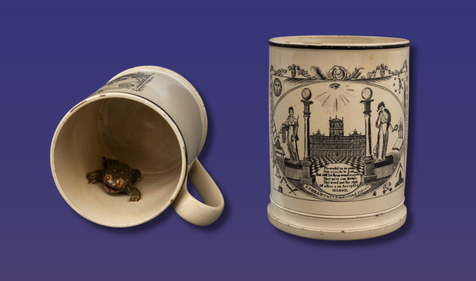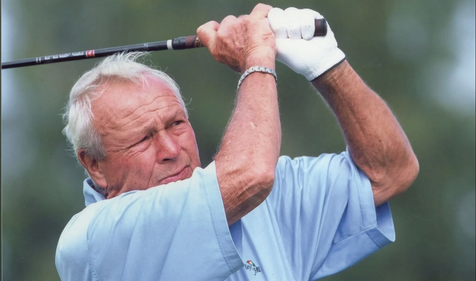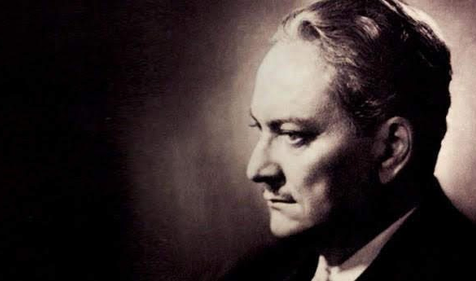Celebrate the legacy of famous pilot and astronaut Freemasons who served our nation, including Brothers John Glenn, Jimmy Doolittle, and more.
As Scottish Rite Masons, we take immense pride in our patriotism and unwavering respect for those who have and continue to serve the United States. That’s why "Devotion to Country" is one of our six Core Values; it is a reflection of our commitment to lifting and honoring these selfless Brethren and all American service members.
Today we shine a spotlight on some of the most remarkable Freemasons who left their mark in the fields of aviation and space exploration. Their accomplishments changed the course of American and world history and made them heroes exemplifying the spirit of service, courage, and innovation. Join us in honoring these extraordinary individuals and their patriotic legacy as we journey through the skies and beyond.
Brigadier General Enoch O’Dell Woodhouse II, 32°
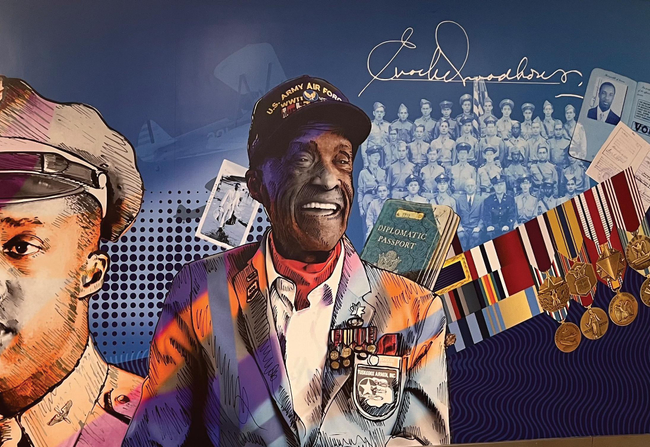
First, we introduce Brother Enoch O’Dell Woodhouse II, 32°. When Pearl Harbor was attacked, he enlisted at his mother’s insistence. Brother Woodhouse stated, “My mother said to my brother and me, 'America is at war. I want you boys to serve your country.”
Brother Woodhouse enlisted in the U.S. Army Air Corps when he was 17. Two years later, he became a member of the 332nd Fighter Group, the highly decorated WWII military unit comprised entirely of African American pilots and other personnel. He is now one of the last surviving members of the Tuskegee Airmen.
For his service, he has been awarded the Congressional Gold Medal and is also a recent recipient of the Daniel D. Tompkins Award for Distinguished Service.
Brother Woodhouse became a Scottish Rite Freemason in 2022.
General James Harold Dolittle, 33°
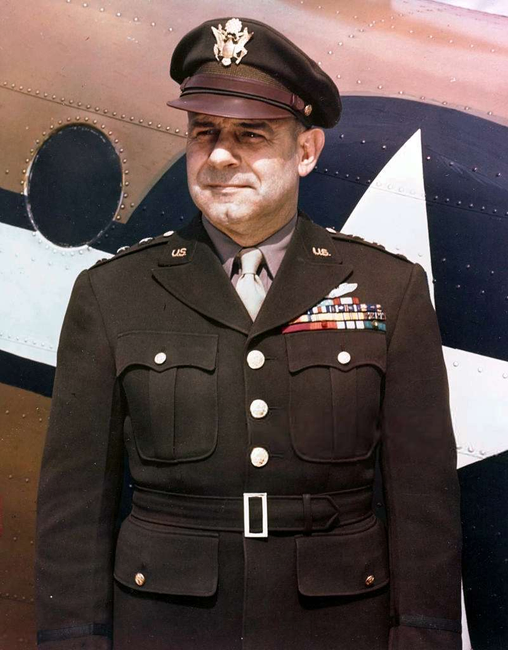
A pioneering pilot, aeronautical engineer, Scottish Rite Freemason, and military leader, Ill. Brother Jimmy Doolittle served our nation in active duty for nearly 50 years. He is best known for his courageous raid in the Pacific Theater during the onset of World War II, leading a daring bombing effort over the Japanese mainland in 1942 which marked the first American attack on the Japanese mainland.
The raid was a strategic victory, forcing the Japanese to respond by redistributing fighter groups to better protect their cities, opening a gap in their defenses. The U.S. military exploited this gap in their Pacific defense and turned the tide of the war.
Brother Doolittle was awarded the Medal of Honor by President Franklin D. Roosevelt and promoted two ranks to brigadier general. Decades later, President Reagan elevated him to a four-star insignia, making him the first member of the Air Force Reserve to become a four-star general, the highest rank in the U.S. Army.
Brother Doolittle was raised as a Master Mason on August 16th, 1918, in Lake Charles Lodge No. 16. in Louisiana. He remained in the fraternity throughout his life and later became a Shriner and joined the Scottish Rite, who coroneted him with the 33°.
Colonel Joe M. Jackson
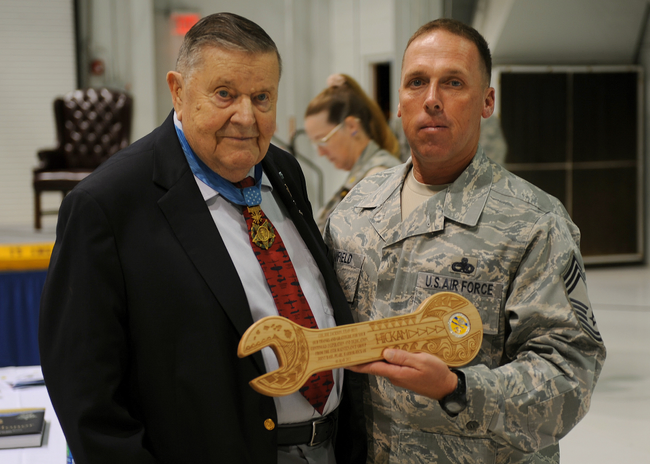
Colonel Joe Jackson was a member of Coweta Lodge #60, Newman, GA and a National Sojourner, a Masonic organization comprised of American Freemasons who serve or have served in the uniformed services.
He flew in three wars, including a B-23 Liberator in World War II and flew in 107 combat missions during the Korean War. However, he is best known for his heroism during the Battle of Kham Duc in Vietnam, which earned him the Medal of Honor in 1968. A United States base was under attack and when the final plane carrying American troops had departed, it was found that several servicemembers were left behind. Brother Jackson volunteered to rescue them, landing a C-123 aircraft on the airfield despite facing heavy fire and having a limited landing area due to the intense wreckage scattered around the base.
For his service, Brother Jackson was awarded the Medal of Honor, Legion of Merit, Distinguished Flying Cross, and 20 other awards. In total, he flew 298 combat missions during his time in the military.
Captain Edward Rickenbacker
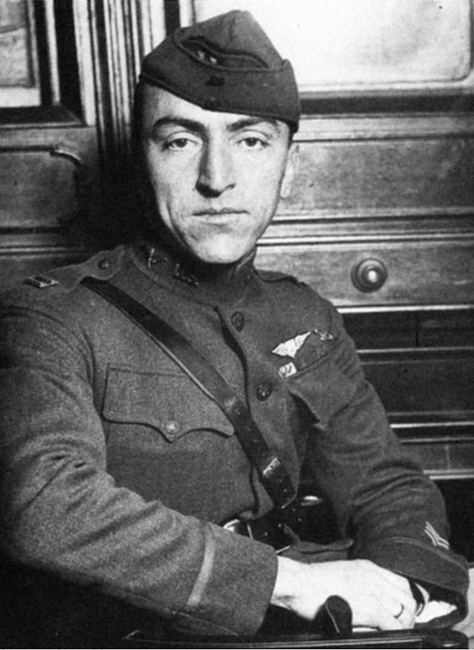
Before World War I, Brother Edward Vernon Rickenbacker was known to Americans as a race car driver. As a Freemason, Brother Rickenbacker was a member of Kilwinning Lodge No. 297 in Detroit, Michigan.
After enlisting in the U.S. Army in 1917, Brother Rickenbacker left WWI with 26 aerial victories, returning to the United States as the nation’s most successful and decorated flying ace of the war. Among his accomplishments, he helped lead the 94th Aero Squadron, turning what was once an underperforming unit into one of the highest achieving in the war and flew more patrols and spent more hours in the air than any other pilot in the service. He spent a total of 300 combat hours.
Brother Rickenbacker received the Distinguished Service Cross a record number of eight times, one of which was upgraded to the Medal of Honor. He also received the Legion of Honor and the Croix de Guerre from France for his defense of our ally.
General Henry Harley “Hap” Arnold
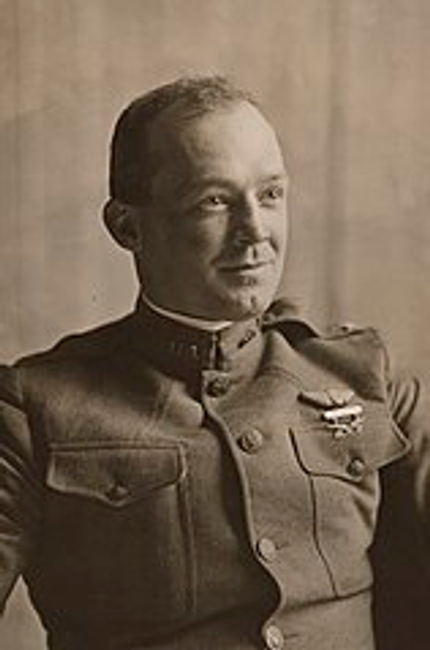
Brother Henry Harley "Hap" Arnold is a towering figure in the history of American aviation and the U.S. Air Force. Not only was he a five-star general during World War II, he was the General of the Air Force, and the only person to hold a five-star rank in two U.S. military services.
A graduate of the United States Military Academy at West Point in 1907, Brother Arnold's early career saw him transition from the infantry to the Signal Corps' Aeronautical Division, where became one of the first military pilots in the world. After the U.S. joined World War I, he served as the Chief of the Air Service, First Army, and was the first to recognize the value of aviation in combat. He advocated for the expansion and modernization of the U.S. air capabilities which carried into the interwar years.
Brother Arnold played a significant role in developing strategies and technologies that would prove essential during World War II. In 1938, Brother Arnold was appointed the Chief of the United States Army Air Corps, and by 1941, he became the Commanding General of the United States Army Air Forces (USAAF). He transformed the USAAF into a formidable global air force, growing it from a few thousand planes to an air armada that could strike anywhere in the world. He was a proponent of research and development, leading to advancements in aircraft technology and the establishment of the Air Force as a separate branch of the U.S. military in 1947.
Brother Arnold was a member of Union Lodge No. 7 in Kansas City, Kansas.
Illustrious John Glenn, 33°
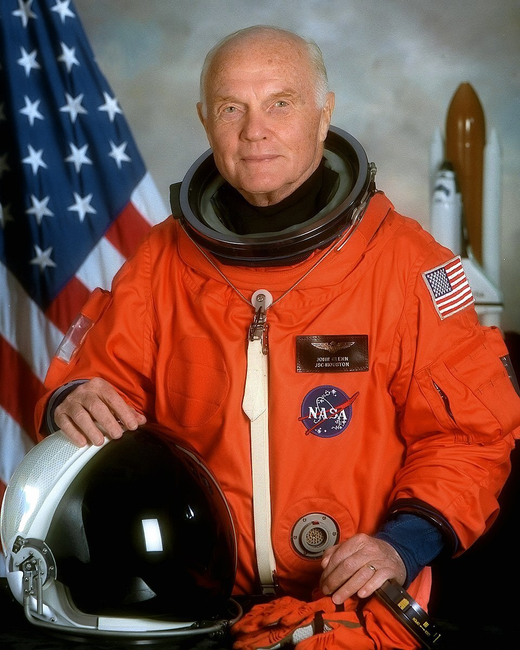
The Illustrious John Glenn, 33°, was an inspiration to many, both inside the fraternity and beyond. He served in both World War II and the Korean War and flew just shy of 150 missions. After he left the military, Brother Glenn became a decorated astronaut and served four terms as a United States senator. He was the first American to orbit the Earth aboard Friendship 7 on February 20, 1962, on the Mercury-Atlas 6 mission, an accomplishment which earned him the NASA Distinguished Service Medal.
Brother Glenn’s lifelong journey in Freemasonry began in 1964 with Concord Lodge No. 688 in his hometown of New Concord, Ohio. He was later made a “Mason at Sight” and earned his Scottish Rite degrees in the Valley of Cincinnati. Brother Glenn was named Sovereign Grand Inspector General and was coronated a 33rd degree Scottish Rite Mason. During his last journey to space in 1998, he wore his 33° ring and made history as the oldest man to travel to space at the age of 77.
Today, his cap and 33° ring are preserved at the Scottish Rite Masonic Museum and Library.
Colonel Edwin “Buzz” Aldrin
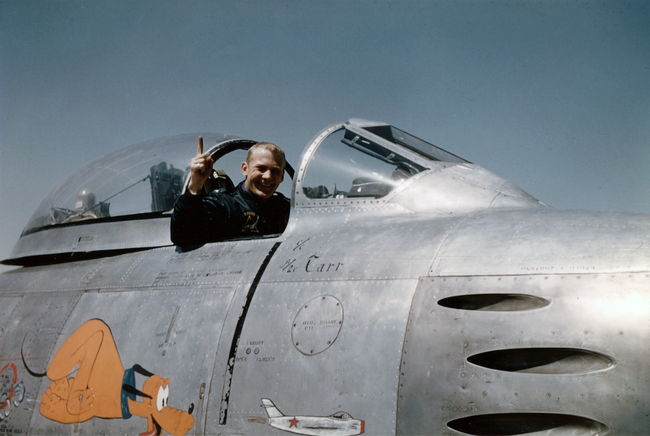
Brother Edwin Eugene (Buzz) Aldrin, Jr. has had an extraordinary journey as a man and as a Freemason. He was initiated into Freemasonry at Oak Park Lodge No. 864 in Alabama and raised at Lawrence N. Greenleaf Lodge, No. 169 in Colorado. He is also a member of York Rite and Arabia Shrine Temple of Houston. But more than anything, Brother Aldrin is known as the second person to walk on the moon and a member of the Apollo 11 expedition.
Brother Aldrin earned a degree in mechanical engineering from West Point before joining the U.S. Air Force, where he flew 66 combat missions in the Korean War, earning the Distinguished Flying Cross for his valor. After the war, he earned a doctorate in astronautics from MIT in 1963, where he developed techniques for manned orbital rendezvous, a critical capability for future space missions.
Brother Aldrin’s first spaceflight was on Gemini 12 in 1966, where he performed a then-record five-hour spacewalk, proving that astronauts could work efficiently outside spacecraft. His most famous mission came on July 20, 1969, when he and Neil Armstrong became the first humans to land on the moon during Apollo 11. For this historic mission,
Brother Aldrin received a special deputation from the Grand Master of Texas, J. Guy Smith to open a Representation of the Grand Lodge of Texas on the Moon and establish Masonic Territorial Jurisdiction there for the Grand Lodge of Texas. He brought a Masonic flag to the moon, symbolizing his commitment to the fraternity. His actions brought a unique honor to Freemasonry, highlighting its values of exploration, discovery, and human achievement.
Celebrating Masonic Pioneers
As we reflect on the extraordinary lives of these pioneering Freemasons, from Brother Arnold's visionary leadership in aviation to Brother Aldrin's historic moon landing, we are reminded of the profound impact they have had on our world. Their stories exemplify the values of courage, dedication, and Devotion to Country that are central to both Scottish Rite Freemasonry and the United States Air Force. By celebrating their achievements, we honor not only their contributions to aerospace and military history but also their commitment to the principles of Brotherhood and patriotism.
Related Stories
Discover additional Scottish Rite blogs and news on this topic.
-
A Jolly Masonic Mug
History
Read More about A Jolly Masonic Mug
-
The Life and Career of Brother Arnold Palmer
Famous Masons
Read More about The Life and Career of Brother Arnold Palmer
-
Manly P. Hall: Philosopher, Mystic, and Freemason
Famous Masons
Read More about Manly P. Hall: Philosopher, Mystic, and Freemason

